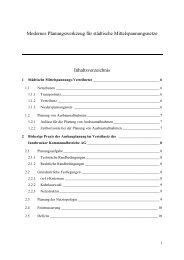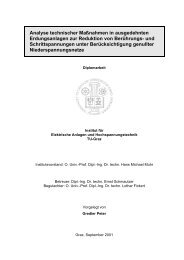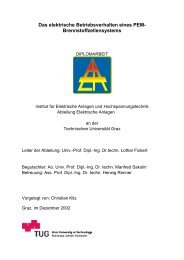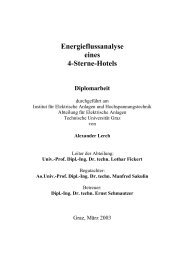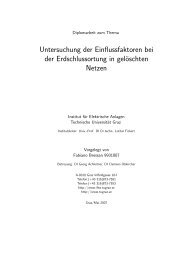Development of a wavelet-based algorithm to detect and determine ...
Development of a wavelet-based algorithm to detect and determine ...
Development of a wavelet-based algorithm to detect and determine ...
Create successful ePaper yourself
Turn your PDF publications into a flip-book with our unique Google optimized e-Paper software.
6.2. BASIC IDEAS OF THE WAVELET TRANSFORM 43<br />
Figure 6.7: Wavelet transform, illustration <strong>of</strong> scale <strong>and</strong><br />
translation<br />
change the lens resolution. Different a corresponds <strong>to</strong> different resolution. It can be<br />
seen that:<br />
• The <strong>wavelet</strong> transform has the multiresolution characteristic so that a signal can<br />
be analyzed from larger features <strong>to</strong> finer features.<br />
• The <strong>wavelet</strong> transform has the ability <strong>of</strong> the simultaneous localization in time<br />
<strong>and</strong> in scale (or frequency) so that local properties <strong>of</strong> a signal can be analyzed.<br />
This is the reason that the <strong>wavelet</strong> transform is praised as a "mathematical microscope"<br />
in signal processing, as it is illustrated in figure 6.7.<br />
6.2.2 Continuous Wavelet Transform<br />
Definition <strong>of</strong> Continuous Wavelet Transform<br />
The continuous <strong>wavelet</strong> transform (CWT) <strong>of</strong> a function f(t) ⊂ L 2 (R) is given by Equa-<br />
tion 6.6.<br />
Wψf(a, b) =<br />
�<br />
+∞<br />
−∞<br />
f(t)ψ ∗ ab(t)dt (6.6)




